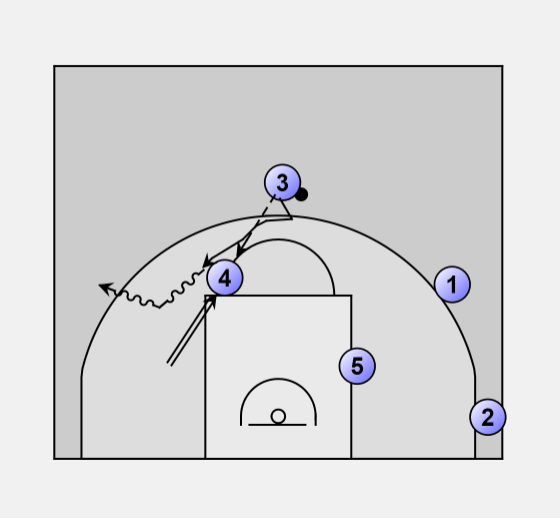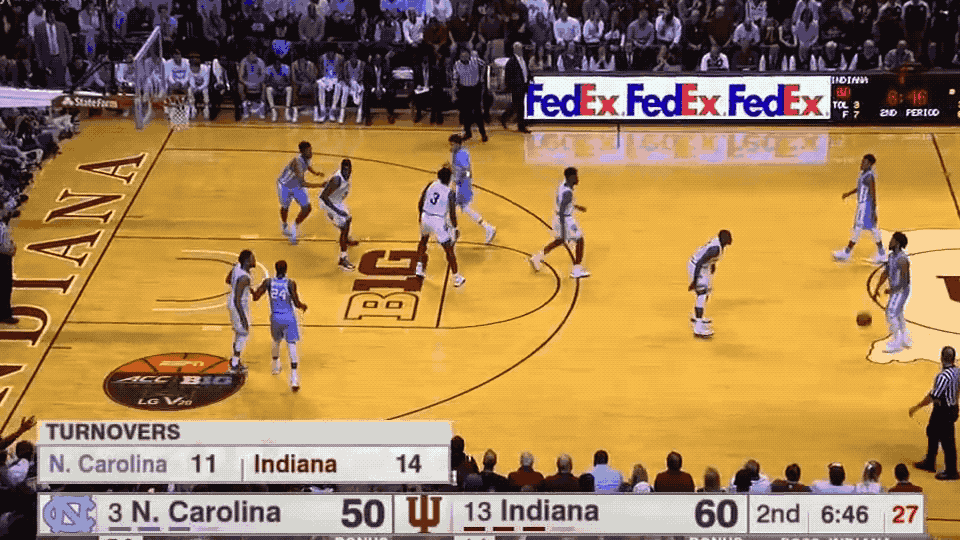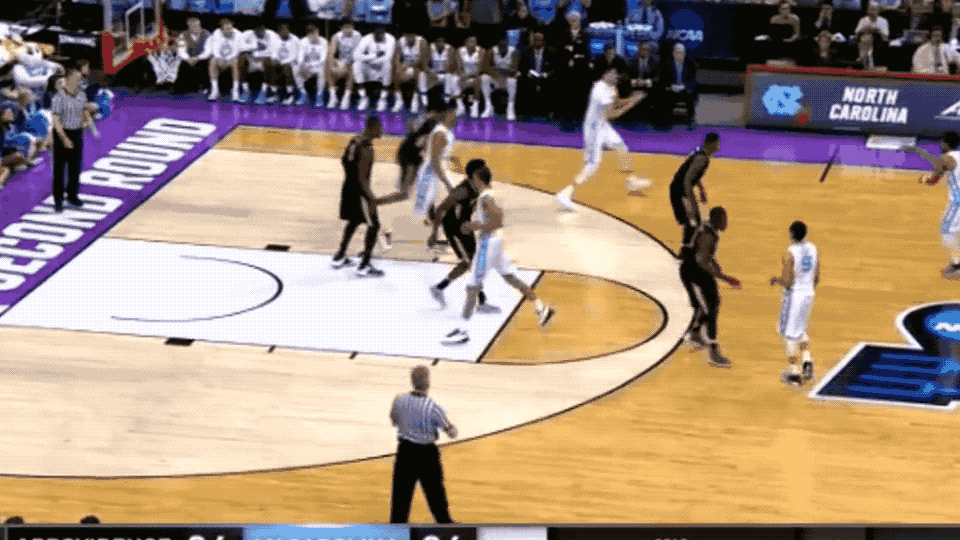It’s hard to have a conversation about Michael Jordan’s talents as a basketball player without some mention of his midrange dominance. The 17-foot fadeaway jumper was a staple of his game; it’s also one of the most memorable visuals from his career.
Those Phil Jackson-coached Chicago Bulls teams of the 1990s were exceptional at utilizing the pinch post. The offense of Tex Winters emphasized that geography of the court, and MJ routinely punished fools from that location.
Jordan and the Bulls aren’t the only combination to take advantage of the pinch post. In fact, MJ’s alma mater is rather adept at the action, too.
First off: What’s the pinch post?
The pinch post is the term for the high-post area (around the elbow) on the weak side of the floor. After the ball is reversed to the middle, the lone player on the weak side will lift to the elbow and look for an entry pass. Now, the pinch post turns into an efficient offensive hub.
In the diagram below, the No. 4 player is located in the pinch post. On the strong side of the court, you can see 1, 2 and 3 create a triangle.

Photo: Courtesy of Jes-Basketball
How does UNC basketball use the pinch post?
You don’t have to run the classic triangle offense to attack the pinch post. Plenty of NBA teams utilize that area of the floor out of quick-hitting motion action; after a ball reversal, it can be a good spot to run secondary actions from. The Golden State Warriors, for instance, use Kevin Durant in the pinch post, and run two-man action with Steph Curry.
UNC basketball wants the ball entered to the pinch post; once it’s there, that players turns into a passer. The Tar Heels frequently use this region to initiate handoff action.
It’s become fashionable to say that the triangle offense is obsolete, especially in the go-go NBA of 2017, but elements of it, like the pinch post, remain timeless.
Let’s see it in action
Here’s out first look at the Tar Heels running some pinch post action: last season’s loss at Indiana.
Joel Berry kicks the ball out to Kenny Williams on the wing, and then cuts down to the corner off a UCLA screen from Tony Bradley. Williams passes the ball to Nate Britt, who has rotated over to the middle of the floor.
Justin Jackson is now the only floor on the weak side of the floor. As soon as Britt collects the pass, Jackson immediately hits his defender — the sturdy OG Anunoby — with a swim move and cuts hard to the pinch post.
Britt passes the ball to Jackson and instantly sprints towards him for a handoff, which he receives. The jet-quick guard turns the corner and is ready to finish at the rim, but Anunoby and Thomas Bryant recover for the denial.
Williams, Berry and Bradley form the triangle on the strong side.
North Carolina’s spacing on that play wasn’t great; watch it again, and take note that when Britt is at the rim, three other Tar Heels have a foot in the paint. On top of that, Berry isn’t exactly well-positioned at the top of the key to get back as the first line of defense.
They still, however, managed to get a good shot, though.
Now, watch this set from the 2016 NCAA Tournament. In the win over Kris Dunn and Providence, the Heels run identical action to the opposite side of the floor.
However, the difference comes with Marcus Paige. Instead of taking the handoff from Brice Johnson, like Britt did with Jackson, Paige sprints to the elbow, and then flares off for a catch-and-shoot three-pointer.
Next Season: One (p)inch at a time
As we’ve discussed several times in this series, UNC basketball will have a plethora of shooters on the floor next season. Roy Williams can leverage that gravity in pinch post action.
If defenders on the strong side of the floor are occupied with shooters, they are further away from being able to help defend. It’s easy to visualize Cameron Johnson and Joel Berry using the pinch post to run two-man action from.
Theo Pinson is one of the few non-shooters that will obviously be a part of North Carolina’s rotation next season. It would be interesting to see Pinson — a multi-positional athlete — be used on either end of pinch post handoffs, too.
Inside the Playbook Series
Kyle Guy and the pindown screen
Joel Berry, Luke Maye and pick-and-pop madness
Georgia Tech basketball’s back cut mastery
Duke basketball and the increasingly popular DHO
Wake Forest fights ice with fire on its side PNRs
Syracuse basketball and its game of zones
UNC basketball and its vaunted secondary break
Miami basketball and the offense of a thousand screens
Louisville basketball, Quentin Snider and the high ball screen
Luke Kennard and Duke’s naturally curly offense
Kenny William, Cam Johnson could create headaches for ACC foes
Ty Jerome, Kyle Guy give UVA flare on offense
Hold the door, UNC basketball wants the elevator up



















